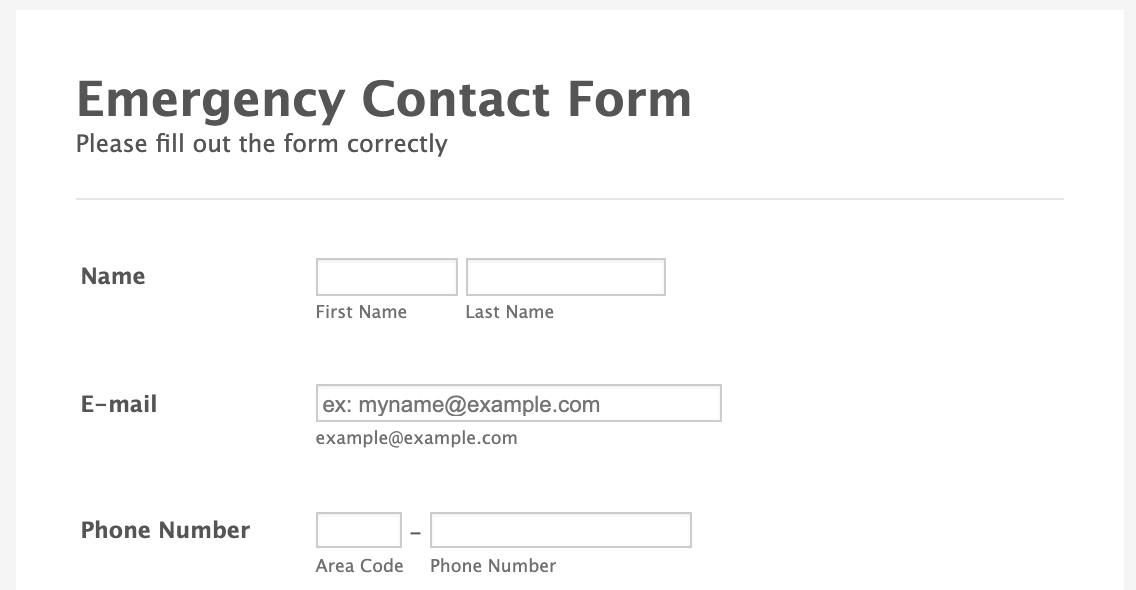If you’re reading this guide, chances are you work for one of the many organizations that isn’t satisfied with their onboarding process. And you’re not alone — a staggering 88 percent of organizations concede they don’t onboard well.
Of course, every organization wants to greet new employees with a welcoming and informative onboarding process. Comprehensive onboarding correlates with as much as 82 percent higher new-hire retention rates. It helps new hires become productive sooner by facilitating their transition into the company culture, and it correlates with company success.
In this guide, we cover the key aspects of employee onboarding. Check out the chapter synopsis below to get a sneak peek, then keep scrolling for insights into how you can improve your onboarding process.
Chapter synopsis
- Introduction.
- What is employee onboarding? Get a clear definition of employee onboarding, why it’s important, and how it differs from another popular term related to new hires.
- The employee onboarding process. Explore four key steps you can take to put new hires on the path to success.
- New hire checklist. Make sure you don’t miss any important aspects of the onboarding process with this checklist, which is in chronological order from hiring to the end of an employee’s first year.
- New hire forms. What forms do you need as part of your onboarding process? We walk through seven you should know about.
Remember to bookmark this guide for later reference. (Chapter 4 alone is reason enough to keep coming back.) Happy onboarding!
What is employee onboarding?
Onboarding a new employee is different at every organization. Some companies have a lengthy, rigorous onboarding process, while others keep the process simple. A troubling 22 percent of companies have no formal onboarding program at all. These differences can be attributed to a number of different factors: company size, available training personnel, budget, and so on.
But what exactly is onboarding, and why is it so crucial to your business? Keep reading to learn more.
3 FAQs about employee onboarding
1. What is employee onboarding?
Employee onboarding is a process focused on turning new hires into productive employees who contribute at a level comparable to veteran team members. It helps new employees acclimate to the working environment, fit in with the company culture, and form new relationships.
“The onboarding process starts before the employee’s first day of work and can last for several months, or even up to a year,” says Jenna Weaver, marketing manager at ClearPoint Strategy.
Onboarding should provide new employees with the information they need about your company — an introduction to the company culture and values through the employee handbook, contact information for their manager and teammates — as well as forms for their payroll and taxes, emergency contacts, and so on.
A key part of onboarding is giving new employees the training they need to perform their roles. Like the overall onboarding process, training will vary in length and rigor. At larger companies, there may be a formal trainer assigned to work with new employees, while smaller companies may use job shadowing to cut training costs.
2. Why is employee onboarding important?
The value of comprehensive onboarding is most prominent in employee turnover rates and efficiency. Organizations with a strong onboarding process improve new hire retention by 82 percent and productivity by 70 percent, respectively.
Weaver explains that onboarding is an important opportunity to introduce new hires throughout the organization. “A well-considered onboarding program will connect a new hire with other teammates, managers, and key projects happening within the organization,” she says.
At Weaver’s company, new hires meet with the leaders of each department during their first two weeks to get a clear idea of how each functional area works and fits together. This helps the new hire understand the strategy of each department and learn about initiatives each department is working on so they can see their role in the context of overall company goals.
“Connecting with other departments also aids in the new hire’s understanding of how cross-functional projects fit into the organization’s overall strategy,” Weaver says.
3. What’s the difference between onboarding and orientation?
Employee orientation and onboarding are often used interchangeably, but they are actually distinct terms. Onboarding spans several months and helps employees gradually become fully productive members of the organization. Orientation is a single component of the onboarding process that introduces new employees to their new workplace and team.
“Orientation generally occurs on the employee’s first day, though some companies may have an orientation week,” says Weaver.
It’s important to set the right tone at orientation, since it’s typically the first interaction a new hire has with your company since their interview. Show the new hire around the workplace, inform them about company policies and expectations, and answer any questions they have.
Now that we’ve established what employee onboarding is, let’s examine how onboarding works.
The employee onboarding process
As noted previously, companies with effective employee onboarding processes have much better employee retention rates than companies without those processes. The exact steps your organization takes to onboard a new employee will differ from those of other companies, but all well-developed onboarding programs have some commonalities.
4 steps of the employee onboarding process
1. Prepare the new hire’s work area
Whether the new employee will work in a cubicle, a corner office, or a warehouse, ensure their work area is ready for their first day. If this is an office job, have IT set up the workspace technology so the employee won’t have any tech headaches on their first day. Be certain the employee has the tools and supplies necessary to do their job.
Courtney Underwood, founder of Kassar Consulting, recommends adding some personal touches — a welcoming card, a desk nameplate, business cards, and/or an invitation to lunch with the manager and the team — to help the company connect with the new hire.
“These items can make a world of difference, and demonstrate that the manager, team, and company are all excited about bringing the new hire on board,” she says.
Of course, not every employee’s workstation will be a desk in an office. Consider a company that refurbishes equipment. The organization will have an office, but it’s likely most employees work on the shop floor. These shop employees may not need office supplies or a computer, but make certain they have what they do need to succeed at their jobs.
2. Provide a new employee welcome kit
Providing key items in a new employee welcome pack guarantees a new hire will receive all the information they need at once, instead of piecemeal.
The specific needs of your company will determine what you include in your packet for new employees, but at minimum it should contain a welcome letter, essential information like an employee handbook, and all the forms the new hire must complete for legal purposes, benefits, employee identification, and so forth.
The first item in the packet should be a welcome letter that gives the new hire a “feel” for the company. The founder of the company, who is uniquely qualified to speak deeply to the organization’s story, culture, mission, and values, is often the person who writes the welcome letter.
“The new employee welcome letter can help new hires feel seen and valued, and gather that their contributions will be appreciated,” says Underwood.
As for new hire forms and information, include items such as
- Payroll documentation
- Emergency contact information
- Employee handbook
- Safety procedures
3. Introduce the new employee to the team
A team introduction is essential for a new employee to connect with the people they will work with. Underwood says the best time to introduce new hires is actually before their start date.
“Send out a quick email to the team telling them about the new hire, their role in the company, and key responsibilities they’ll be handling,” she says. “This can go a long way in preparing the team to receive their newest member come day one.”
As Jenna Weaver mentioned in Chapter 2, introducing the new hire to people around the company is important. Underwood recommends introducing new employees and key stakeholders, such as department heads and project leads, during the new employee’s first week.
“It’s essential that new hires build solid relationships as soon as possible to increase their chances of success within the organization,” Underwood says.
4. Conduct new hire training
New hires expect onboarding to inform them about
- Their role in context of the company’s mission and values
- Expectations for performance
- Information on payroll and benefits
- Workplace safety
- Training specific to their role
The last item is likely to require the most time, particularly if the role requires an employee to undergo extensive training and practice to become proficient.
“At the end of training, an employee should know their purpose in fulfilling the company’s mission, how people interact with each other, and how their employer will support them in their role,” Underwood says.
The onboarding process can be lengthy and complex. The next chapter is a checklist of essential items and actions involved in onboarding a new hire.
New hire checklist
In the hustle and bustle of onboarding, there’s a lot to keep track of, especially if multiple new hires need to get up to speed. And onboarding can go on for weeks or months as employees acclimate to their new work environments and connect with their new teams.
Jagoda Wieczorek, HR manager at ResumeLab, recommends that HR teams create a detailed onboarding roadmap to help each new hire thrive. It should detail what they need to accomplish, who they need to meet, and who is responsible for their training.
“Companies must understand that employee onboarding is more than just a one-day interaction,” Wieczorek says. “New hires will need guidance for some time after they’re hired.”
Check out the new hire checklist below for help drawing an onboarding roadmap to keep you and your new hires on track.
New employee onboarding checklist: Chronological breakdown
Before the first day
Effective onboarding begins when the new person is hired, and it’s well underway by their first day at work. Here are a few things you should address prior to their start date:
- Prepare their workspace. Whether it’s a desk in an office or a workbench in a warehouse, be sure their workspace includes all the tools and supplies they need to accomplish their work. “You don’t want your new employee going on an unnecessary scavenger hunt for supplies on their first day,” says Wieczorek.
- Provide a first-day agenda. Let the new hire know what to expect on their first day, including where to go, when to get there, and what to bring. Wieczorek says a new hire’s first day can be hectic. Giving them a walkthrough can save everyone a headache.
- Pull together a new hire welcome kit. As mentioned in Chapter 3, the welcome packet should include, at a minimum, a welcome letter and necessary legal documents. Wieczorek suggests including small welcome gifts, such as branded T-shirts, coffee mugs, tote bags, and the like. “The point is to not only address administrative concerns, but also ensure the new employee feels like a valued member of the organization,” she says.
First day
The first day sets the tone for the new hire’s experience with your company, so a checklist for their first day is critical. This what you’ll want to accomplish that first day:
- Communicate company culture. Business processes may change over time, but culture and values endure. “Instilling your company’s culture and values in a new hire on the first day ensures they have a constant guide for their decision-making. Don’t hesitate to reiterate these aspects throughout the onboarding process,” says Jason Patel, founder of Transizion.
- Designate a point person. New hires will undoubtedly have a lot of questions. Beyond providing them with a list of contacts for different needs, designate a point person who they can turn to when in doubt.
- Introduce them to their new team. The new hire introduction can set the stage for smooth and productive collaboration, if handled appropriately. The sooner new hires form solid relationships with their teammates, the better.
First week
New hires are still getting their bearings during their first week. Here’s how you can help them succeed:
- Introduce them to key stakeholders. Chapter 2 noted the advantages of introducing new hires to people beyond their immediate team. For example, the heads of different departments can help new hires to recognize how their work contributes to broader organizational goals.
- Begin training. Larger organizations might not start training in the first week due to the amount of paperwork to fill out and the number of people to meet. Smaller organizations can knock these items out in the first day or two. In any case, you may start training, at least lightly, early on.
First month
Depending on how your organization operates, the first month may look very similar to the first week, especially if the learning curve for the business or specific role is long.
- Continue training. With the administrative and cultural aspects mostly covered in the earlier stages of onboarding, the focus turns to more intense training. This is when many companies thoroughly train new hires to perform their job duties, whether with a formal trainer or by shadowing veteran employees.
- Check in on their progress. To head off any potential issues, have the manager of the new hire report regularly on how the new hire is progressing and acclimating.
First year
Only a handful of companies extend their onboarding processes to a full year, but these checklist items are applicable to any time past the first month:
- Complete and assess training. Whether the duration of your training is a few weeks or extends several months, be sure to assess the training’s effectiveness. This ensures the new employee is productive and performing their duties with appropriate proficiency.
- Seek feedback. Speak with the new hire about their onboarding experience to determine what worked and what could be improved. Incorporate these insights into your onboarding roadmap.
We hope the above checklist was helpful. Last on the docket is a list of important forms you’ll need for new employees.
New hire forms
Some onboarding documents, like tax forms, are standard for all businesses, but many organizations require new hires to fill out a number of additional forms. Below we’ve put together a list of several common forms you should incorporate into your own onboarding process, if you haven’t already.
7 new employee forms you need to know about
W-4 form
Employee form W-4 is an IRS tax document that each new hire completes and returns to their employer. The main purpose of this form is to tell the employer how much tax to withhold from the employee’s paycheck. You can find the W-4 form on the IRS website, complete with instructions and fillable fields.

W-2 form
The W-2 form is an IRS tax document that employers fill out and send to all employees. The W-2 details how much the business paid the employee and how much tax it withheld from the employee’s paycheck. Like the W-4, you can find the W-2 form on the IRS website.
Employee information form
The new employee information form will vary from company to company as far as what details are included, “but typically it will ask for things like demographics and contact information at a minimum. It may also ask for basic info about your spouse, if you have one,” says Katrina Brittingham, executive coach and founder of VentureReady.
Emergency contact form
The emergency contact form tells the employer whom to contact, usually a family member, if an employee has an emergency at work. The form requires the emergency contact’s name, contact information, and relationship to the employee — such as spouse, parent, sibling, or friend. If an accident or other incident occurs at work, HR or the employee’s manager will use the form to contact the person listed and inform them about what happened.

Employee benefits form
Brittingham says the employee benefits form allows the employee to select the benefits package, including healthcare options, that best suits them. “You can typically choose between a single or family plan for healthcare, and varied other benefits options such as retirement and 401(k) plans,” she says.
Direct deposit form
The employer uses the employee direct deposit form to deposit payroll funds directly into an employee’s bank account. The form requires the employee’s name, address, checking or savings account number, bank routing number, signature, and date.
“Some employers let you split your paycheck across two accounts. In those cases, you’ll have to provide the banking details for both accounts,” Brittingham says.
Employee questionnaire
The new employee questionnaire has various uses. For example, you may use it to get to know your new hire better, in which case you can inquire about their hobbies, favorite restaurant, ways they relax, and so on.
Alternatively, you can use the questionnaire to survey new hires about their onboarding experience. For example, you could ask about their favorite part of onboarding and the part they found most confusing.
Whatever form you need, Jotform is here to help. From gathering employee information to surveying them for feedback, our easy-to-use form templates streamline data-collection and assessment efforts beginning with onboarding and continuing throughout their tenure with a company.
Meet your employee onboarding guides
Courtney Underwood
Courtney Underwood is the founder of Kassar Consulting. She has more than 18 years of experience in human resources and leadership development, which she uses to help entrepreneurs and corporate leaders navigate the business of people and increase their bottom line.
Jagoda Wieczorek
Jagoda Wieczorek is an HR manager at ResumeLab. She has more than three years of experience in employee onboarding and offboarding across multiple verticals and markets. She designs and executes hiring processes in addition to leading a full-fledged HR team.
Jason Patel
Jason Patel is the founder of Transizion, a college and career prep company focused on closing the opportunity divide in America. He believes this generation’s defining struggle will be how the world adapts to the rise of automation in our economies.
Jenna Weaver
Jenna Weaver is the marketing manager at ClearPoint Strategy, which provides strategy and performance management software. In addition to marketing, she helps with the process of recruiting and onboarding new employees, ensuring they are integrated into the team and company culture.
Katrina Brittingham
Katrina Brittingham is an executive coach and founder of VentureReady. She has 20-plus years of experience in operations, auditing and compliance, employee benefits, and strategic and change management. As a coach, she has helped many corporate leaders and entrepreneurs get to the next level in their careers.











































































Send Comment: